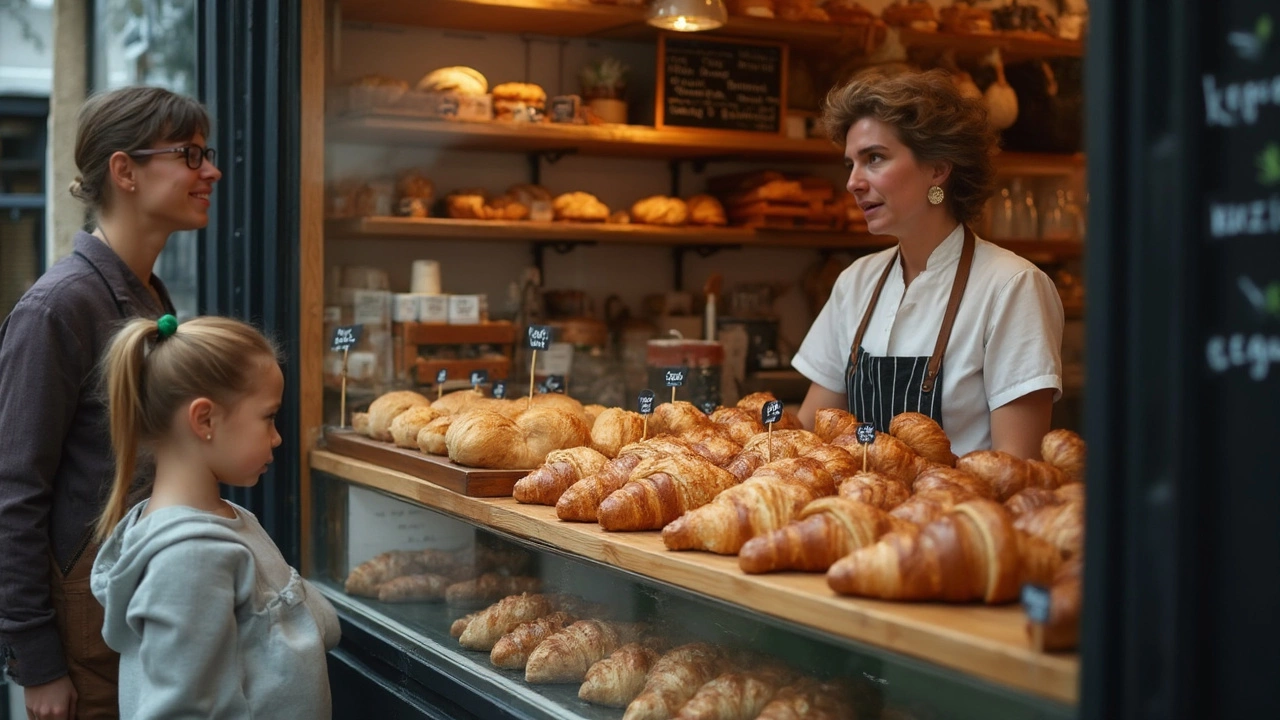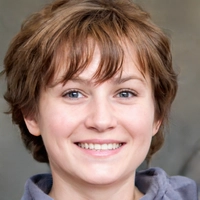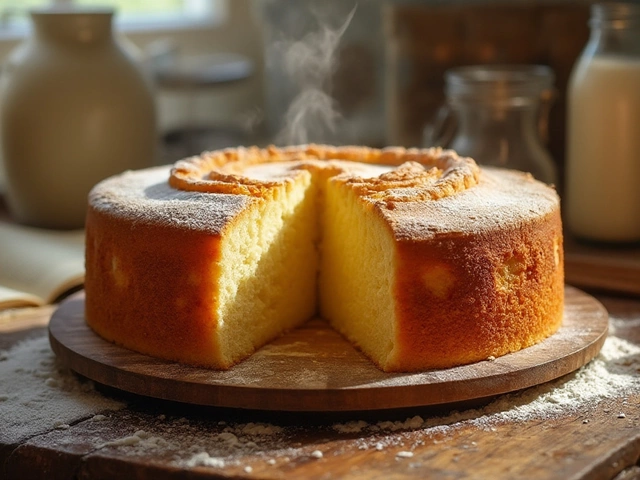Craving a flaky croissant but want to stick with vegan choices? You're far from alone. Plenty of people are surprised when they find out what actually goes into this classic pastry. Spoiler: most croissants at bakeries or grocery stores aren't vegan by default.
The big issue? Butter. Lots and lots of butter. Traditional French croissants get their taste and texture from layers of butter folded into the dough. On top of that, milk and sometimes even eggs make their way into the mix. So if you follow a plant-based diet, the standard version is off-limits. But all hope isn't lost—you've got options if you know what to look for and aren't afraid to try some simple swaps when baking at home.
Before you buy or bite into one, it helps to know what makes a croissant vegetarian but not vegan, and how big brands and local bakers sometimes sneak in animal products you might not expect. Let's pull apart the layers (pun intended) and see how you can enjoy croissants, totally plant-based.
- Why Croissants Usually Aren’t Vegan
- The Essential Ingredients in Traditional Croissants
- Hidden Animal Ingredients: What to Watch For
- Easy Swaps: Making Vegan Croissants at Home
- How to Find Vegan Croissants in Stores and Bakeries
- Fun Facts and Vegan Croissant Hacks
Why Croissants Usually Aren’t Vegan
Here’s the deal: most classic croissants are a no-go for vegans. The reason is simple—traditional recipes depend on animal-based ingredients. If you look at the ingredient list at any French bakery, you’ll run into butter pretty much every time. Sometimes croissants contain up to 40% butter by weight. That richness isn’t vegan-friendly.
It’s not just the butter though. Milk and eggs are other hidden extras. Milk is often used to bring a bit more softness to the dough and even get that golden color. Sometimes, bakers brush egg wash on the croissants before baking, so you get a shiny, crispy crust.
- Croissants contain animal ingredients as a standard, not an exception.
- The classic “buttery” flavor almost always means real butter was used.
- It’s almost impossible to find a plain croissant in traditional bakeries that checks all the vegan boxes.
Check out this quick breakdown of what’s almost always inside a regular croissant—and why it’s not plant-based:
| Ingredient | Function | Vegan? |
|---|---|---|
| Butter | Adds flavor, creates layers | No |
| Milk | Softens dough, adds taste | No |
| Egg | Shiny crust, color | No |
| Flour | Main structure | Yes |
| Yeast | Helps it rise | Yes |
| Sugar, Salt | Flavor balance | Yes |
What about so-called “margarine croissants”? Sometimes bigger factories swap butter with margarine to save money, not to make them vegan. Many margarines still sneak in traces of milk (like whey or casein), so it’s worth double-checking the label if you spot “dairy-free” claims. Unless something is clearly labeled as vegan, there’s a big chance animal products are hanging around.
The Essential Ingredients in Traditional Croissants
If you've ever wondered what gives croissants that epic, flaky bite, it's not a secret ingredient—just a specific set of basics done right. French bakers have stuck with the same simple lineup for centuries, and for a reason. Here’s what you’ll usually find in a standard croissant recipe:
- Croissants start with white flour—nothing fancy, just plain all-purpose or bread flour for that chewy pull.
- Yeast brings the rise, creating air pockets that puff up each buttery layer.
- Sugar and salt add a little flavor and help with browning, but it’s never much. Croissants stay pretty mild instead of sweet.
- Here’s the dealbreaker for vegans—high-fat dairy butter. This isn’t just for taste; butter is folded in again and again, making those signature flaky layers. Most bakeries won’t use margarine or oils here because the real thing is what delivers the classic taste and crunch.
- Milk is used in a lot of recipes to make the dough softer and a bit richer, although some super old-school places stick to water.
- Egg wash goes on top before baking, giving French croissants that golden, shiny crust that almost looks painted on.
Mixing it all up isn’t just about tossing things in a bowl. Croissant dough has to be rolled, folded, and chilled several times. Each time the dough is folded around a thick layer of butter, the layers double. This is called “laminating,” and it really doesn’t work without butter or a near-perfect substitute.
So, when you look at the ingredients, it’s clear why traditional croissants don’t fit the vegan bill. It’s less about the number of animal products and more about how each one totally shapes the final result. If you want that same flaky magic without dairy or eggs, you can’t just leave them out—you’ll need smart, tested swaps (hang tight for those in the next section).
Hidden Animal Ingredients: What to Watch For
Picking a croissant at the bakery and assuming it's just flour, water, and yeast? Not that simple. There are a bunch of animal-based add-ins hiding behind the scenes. If you're after vegan desserts, you have to check more than just the word "butter" on the label.
Here's what shows up in most traditional croissants and why.
- Butter: Obvious, but easy to overlook. Classic croissants can be up to 40% butter by weight in the dough. No plant-based butter? It's not vegan.
- Milk: Many recipes swap some or all water for cow's milk, adding a richer flavor and softer crumb. Watch for "lait" in French bakeries or "milk powder" in packaged goods.
- Eggs: Most pure French croissants skip eggs, but American versions and "croissant rolls" often add them for color or moisture.
- Honey: Bakeries go for shiny, golden tops by brushing with egg wash or honey after baking. Even if the croissant looked plain at first, a honey glaze could make it off-limits.
- Whey & Casein: These are milk proteins sometimes used in mass-produced or frozen croissants to boost shelf life. Both are dairy-based.
Let’s make it easier with a quick look at what might show up in croissant labels:
| Ingredient | Animal Origin? | Why Used? |
|---|---|---|
| Butter | Yes | Flavor, flakiness |
| Milk / Milk Powder | Yes | Dough texture, taste |
| Eggs | Yes (sometimes) | Enrichment, browning |
| Honey | Yes | Glaze/top color |
| Whey, Casein | Yes | Preservation, texture |
The real wild card is that "natural flavors" or "enzymes" can sometimes sneak animal stuff in. Manufacturers don’t have to explain everything on their ingredient lists, especially if it’s just a minor additive. If a product isn’t marked vegan, don’t be afraid to ask the baker or reach out to the company for more info. It's your best shot at dodging hidden animal products in your croissant craving.

Easy Swaps: Making Vegan Croissants at Home
If you're itching to bake croissants at home but want to keep things 100% plant-based, it's a lot easier now than it used to be. The main challenge is swapping out the animal-based ingredients—mainly butter, milk, and sometimes eggs—with vegan-friendly choices that still give that classic flaky, soft texture.
The usual go-to is vegan butter. Brands like Earth Balance, Miyoko’s Creamery, and Naturli are super popular because their taste and fat content are pretty close to dairy butter. That high fat is key for layering the dough—it’s what gives croissants their signature puff and crisp edges. For milk, any unsweetened plant-based milk works. Oat, soy, or almond milk all do the job, but oat milk seems to be the crowd favorite for baked goods because it's creamy and not too strong.
| Ingredient | Traditional | Plant-Based Swap |
|---|---|---|
| Butter | Dairy butter | Vegan butter or margarine |
| Milk | Cow's milk | Oat, soy, or almond milk |
| Egg wash (for shine) | Egg yolk | Mix of plant milk and maple syrup or oil |
Eggs are usually just used as a glaze for shine and color. Brushing with plant milk, a touch of maple syrup, or even a little bit of melted vegan butter does the trick. The result isn't quite as glossy, but you still get a golden color and a bakery feel—without the animal products.
If you're looking for a quick overview of the method, here's a simplified version of the homemade process:
- Make the dough using strong flour, a bit of sugar, yeast, salt, vegan butter, and your plant milk of choice.
- Rest and chill your dough so it’s easy to work with.
- Laminate (that’s baker speak for folding in the vegan butter multiple times) to get those flakey layers.
- Shape your croissants—triangles rolled up tightly work best.
- Let them rise, then brush with your vegan glaze.
- Bake until golden and puffy. That’s it!
Here’s a tip: refrigerate or even lightly freeze your vegan butter before folding. Some plant butters soften quickly and you want them as cold as possible to get awesome layers. Most home bakers find that vegan croissants take a little extra time to perfect, but once you nail the process, the results are worth every minute.
How to Find Vegan Croissants in Stores and Bakeries
So you want to grab a croissant on the go without stressing over animal ingredients? The good news is that vegan options are growing, but you’ve still got to be a detective. Most croissants on shelves—even in trendy cafes—aren’t vegan, but there’s a decent chance you’ll spot plant-based ones if you know where to look.
Your best bet for vegan croissants are natural grocery chains and specialty bakeries. Stores like Whole Foods often carry vegan brands in the bakery aisle or freezer section. For example, “Sichoix” Vegan Croissants show up at some U.S. Whole Foods. Trader Joe’s has sometimes stocked authentically flaky, dairy-free croissants during special promotions, but these fly off shelves quickly.
When it comes to bakeries, call ahead or check online menus before making the trip. More bakeries in big cities now list vegan pastries right alongside the regular ones. Some popular names in the U.S. include Erin McKenna’s Bakery (New York and LA) and L’Artisan Gourmet Paris Croissant (San Francisco). Even some French bakeries are jumping on board, especially in Paris, London, and Berlin.
- Always ask for ingredient lists if vegan options aren’t clearly labeled.
- Look for keywords like “dairy-free,” “plant-based,” or “vegan” printed right on packaging or bakery signs.
- Scan the allergen section for milk, butter, or egg warnings.
- Check online vegan forums or apps (like HappyCow) to find recommended spots near you.
Stuck in a pinch at a regular bakery? Sometimes you’ll find chance vegan croissants at local spots by asking the staff. A few bakeries use plant-based margarine and almond milk for texture, even if their owners aren’t vegan themselves.
| Bakeries/Stores | Location | Vegan Croissants? |
|---|---|---|
| Whole Foods Market | USA (nationwide) | Yes |
| Erin McKenna’s Bakery | NY/LA | Yes |
| Marks & Spencer | UK | Yes (occasionally) |
| Paris Baguette | USA/International | Limited |
| Le Pain Quotidien | International | Sometimes |
Of course, you’ll hit more wins in bigger cities, but don’t give up if you’re in a smaller town—sometimes it’s the little artisan shops, not the chains, that will surprise you.
"Vegan bakery products are among the fastest growing categories, and croissants are at the top of the wish-list," says Julie Emmett, Plant Based Foods Association.
Remember, just because it says “buttery” or looks glossy doesn’t mean it’s loaded with animal ingredients—plant-based butters are shockingly close in taste and look. If you’re ever unsure, checking the full ingredient list or asking the baker is the fastest way to be certain.
Fun Facts and Vegan Croissant Hacks
If you think croissants are just about France and fancy bakeries, think again. The croissant didn’t even start in France. It traces back to Austria in the 17th century—yep, the kipferl. French bakers put their own spin on it with buttery layers in the 1800s, leading to the treat we crave today.
While croissants are known for their buttery taste, you actually don’t need dairy to get that signature flakiness. Vegan butter made from plant oils (like coconut, sunflower, or canola) does the job perfectly in homemade versions. Some vegan pastry lovers even use a mix of margarine and a little coconut oil for both structure and flavor.
Did you know that the classic big brands don’t usually offer vegan-friendly croissants? Out of 10 major supermarket chains in the US and Europe, only 2 offer a clearly labeled vegan croissant—so always check menus or packaging, even in places you’d expect.
Some pro tips to make your croissants truly vegan and just as tasty:
- Swap regular butter for a high-fat vegan spread—go for 80% fat content when you can. It helps with lamination and texture.
- Use oat milk or soy milk for your dough and brushing the top before baking. These give a glossy finish.
- Try using aquafaba (the liquid from canned chickpeas) instead of eggs for any egg wash steps—it works wonders for color.
- If you’re in a rush, some frozen vegan puff pastry rolls from the store can be shaped into croissants. It’s a shortcut, but the result is impressive for brunches or last-minute cravings.
Here’s a quick look at common swaps for vegan croissants:
| Traditional Ingredient | Vegan Alternative |
|---|---|
| Butter | Plant butter or vegan margarine |
| Egg wash | Aquafaba or plant milk + maple syrup |
| Milk | Oat, almond, or soy milk |
The biggest hack? If you’re not up for homemade, check for artisan bakeries. More are popping up in big cities, and social media is a goldmine for finding shops that bake vegan croissants fresh daily. And if you spot a croissant labeled as vegan but it’s surprisingly buttery or flaky, don’t be afraid to ask about the ingredients. Transparency is way more common these days, and most bakers are happy to share.





